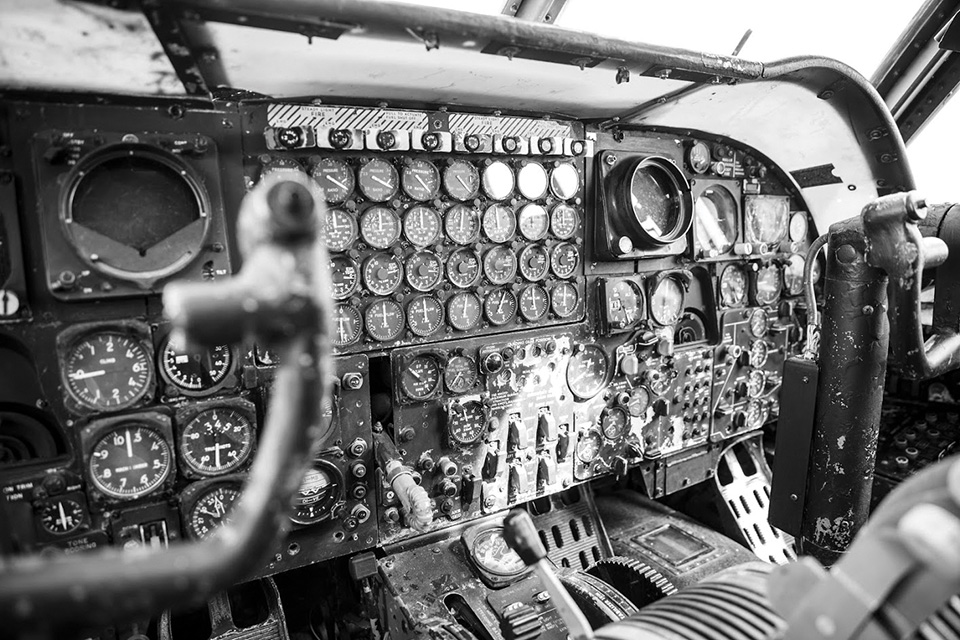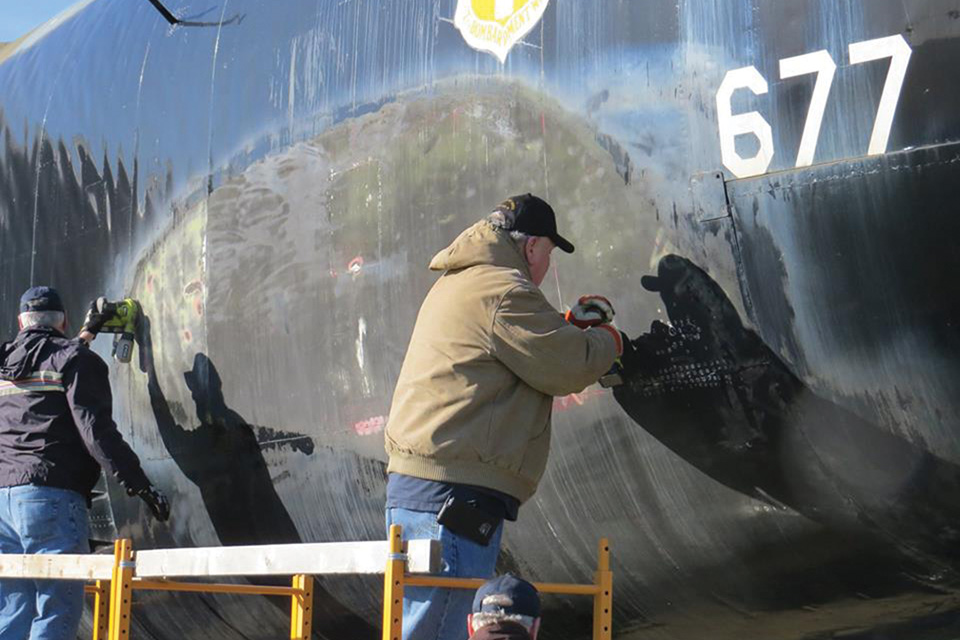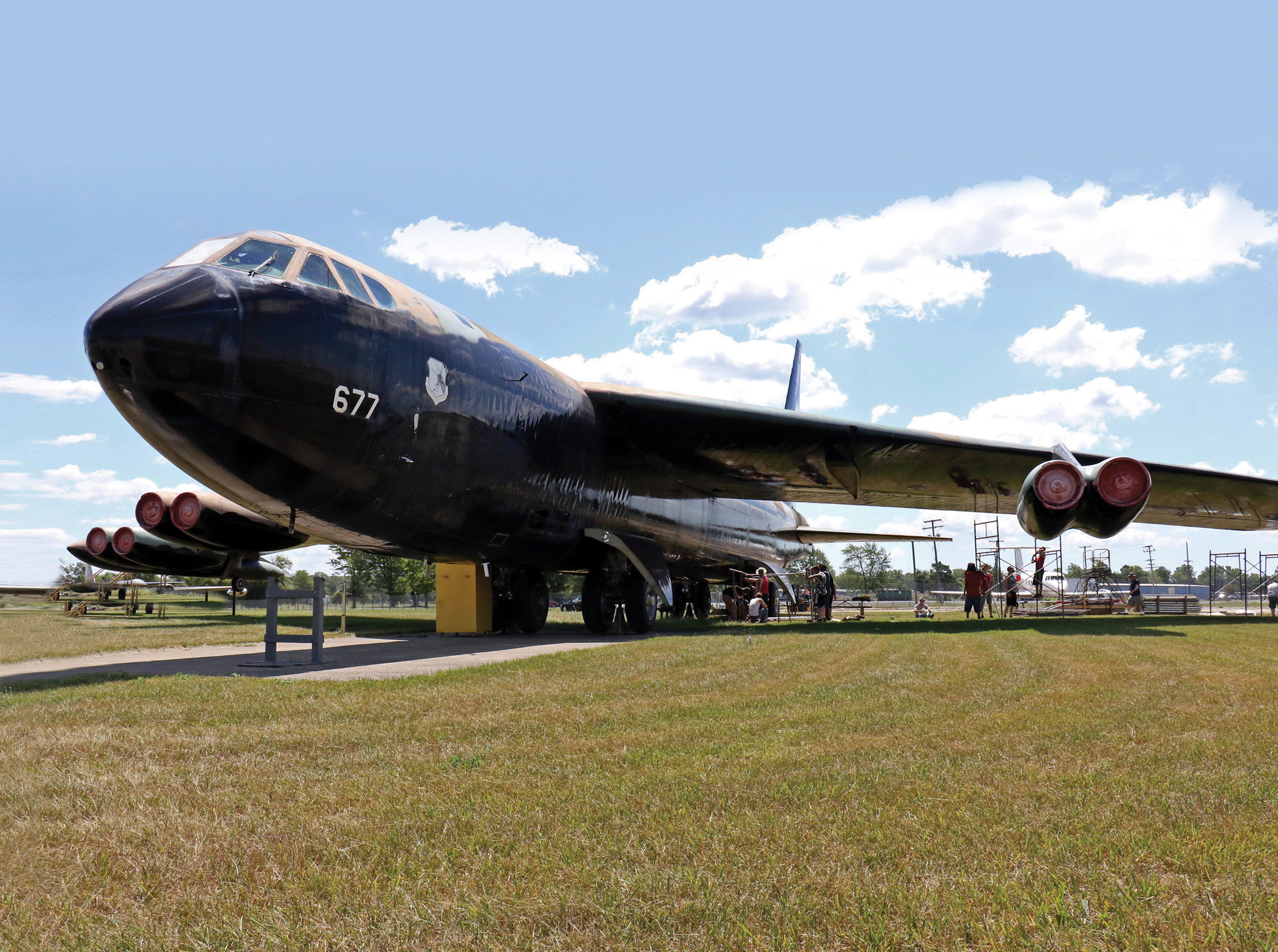Some of the volunteers working to restore a historic B-52D Stratofortress at the Yankee Air Museum serviced the very same aircraft during the Vietnam War.
Among the first things visitors to the Yankee Air Museum in Belleville, Mich., notice is a Boeing B-52D Stratofortress, parked in a fenced-off area adjacent to Willow Run Airport. It’s hard to miss, with its 185-foot wingspan and 40-foot-tall tail. Scaffolding is in place, the bomb bay doors might be open and volunteers may be working on it. The location is not an obvious B-52 work site as these aircraft were never based at Willow Run, though a nearby plant built thousands of Consolidated B-24 Liberators during World War II. As it turns out, this particular Stratofortress served with distinction in the Vietnam War, and some of those involved with the bomber’s extensive restoration actually worked on it during the war.
B-52D serial no. 55-0677 was manufactured by Boeing in Wichita, Kan., and delivered to the U.S. Air Force in August 1957. It flew more than 600 combat missions during the Vietnam War from Guam, Okinawa and U-Tapao Royal Thai Navy Airfield in Thailand. Number 677 participated in the December 1972 Operation Linebacker II bombing campaign against North Vietnam, which helped facilitate the signing of the Paris Peace Accords in January 1973. After combat operations ceased in Vietnam, bombing in Laos continued into February and 677 is believed to have been the last B-52 to bomb that country.
The veteran BUFF (big ugly fat f—er), as B-52s were known to their aircrews, returned to the United States and was ultimately flown from Carswell Air Force Base in Texas to Willow Run in 1983. The bomber is on loan to the Yankee Air Museum from the National Museum of the U.S. Air Force. It hasn’t been moved since it was parked, as relocating a 175,000-pound aircraft is a formidable task. On Memorial Day 1984, 677 was dedicated as a permanent memorial to all aircrew members who lost their lives in Southeast Asia.

While there are no known records indicating the bomber suffered battle damage, nature has not been so kind. As it sat outdoors over the years, the fuselage corroded and began to deteriorate. By 2014 the deterioration reached a point where scrapping 677 was seriously considered. Ralph Koehler, the museum’s restoration manager, called Joe Provost, who had served as a B-52 crew chief at U-Tapao and worked on 677, to determine if it was salvageable.
Provost contacted fellow veterans and museum members Bob Bailey and Nick Consiglio, who helped evaluate the airframe. The determination was made that 677 could indeed be restored and the venerable bomber saved for posterity.
Work began in 2015. Provost, Bailey and Consiglio, along with Air Force veterans Luke Noble and Dave Barnhart, coordinate ongoing restoration efforts throughout the year. They schedule work to be completed, assess equipment requirements and determine if any special materials or tooling are required.
In addition to museum volunteers, two other teams are actively involved in the restoration effort. One team consists of students from the nearby MIAT College of Technology, in Canton, Mich. While working on the project these students are earning college credit and receiving expert aircraft restoration training. The young men and women learn real-life job skills and get firsthand exposure to an important part of U.S. history.

The second team is composed of U-Tapao alumni, personnel from any service branch who were permanently stationed or on temporary duty at the airfield during the war. Provost, Bailey and Consiglio are all U-Tapao alumni, which led to their organizing an annual one-day work party for these veterans, the first of which was held in 2016. Attendees come from many different states to help restore this piece of Vietnam War history for future generations. Added benefits include enjoying camaraderie with fellow veterans while sharing a few war stories.
The teams have made considerable progress over the last few years. Restoration work has included reskinning both wing roots and all 16 engine cowlings, repairing the right wing leading edge and various cracks/corrosion in the fuselage, restoring four engine nacelles and most of the bomb bay doors plus fixing mechanical parts, draining fluids and similar maintenance. Future plans include restoring the left wing leading edge, reskinning the majority of the left wing underside, ongoing corrosion repair, general maintenance and installing the restored engine nacelles. One of the many goals for 677 is to restore the original Southeast Asia black and camouflage paint scheme.
Work party participants cite many reasons why they spend their time, money and effort on the project. Brad Beall was a tail gunner on 677, based in both Guam and U-Tapao. He traveled to Willow Run from his home in Illinois to work on the bomber during a 2017 work party. “It’s just so cool to be able to work on the same aircraft I flew on during the war,” Beall said.
“We have U-Tapao veterans and their families from all over the nation, at their expense, come to Willow Run to partake in her restoration,” Consiglio noted. “Many of these vets never touched an airplane when they served but are happy to work their hearts out.” Consiglio, who also serviced 677 during the war, uses the same tool bag now as in his U-Tapao days.
Restoration work will continue over the next few years. Long term, the Yankee Air Museum is constructing a new Aeronautic Center a few blocks from the museum to house its flyable aircraft collection. The B-52 will be moved to a location adjacent to the new center, and visitors will be able to see this aviation legend close up as they arrive at the museum.
“We need to preserve what we can of aviation history and the memory of all the men and woman who came before us,” commented Bailey. For more information, see yankeeairmuseum.org.





